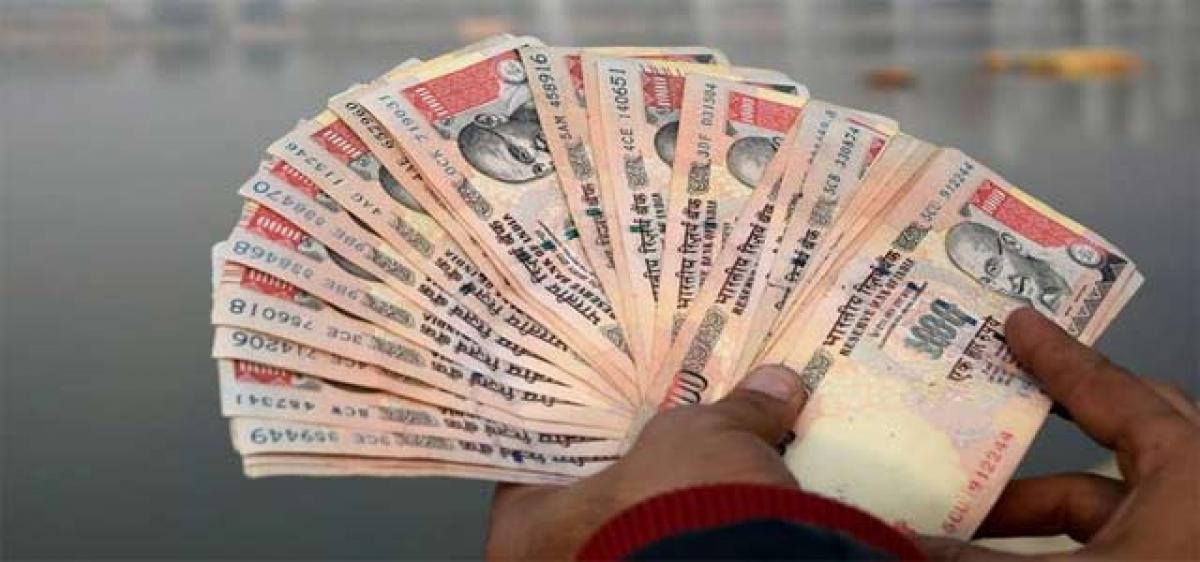Decoding demonetisation of India’s biggest notes

To curb the ‘Black Money’, as the world sleeps, at the stroke of midnight hour, the Indian Prime Minister Narendra Modi’s announced the demonetization of 86% of the currency of world’s third largest economy on 8 November is one of the boldest moves, ever since he took over the reign of power. Jokes are going around that when Americans are counting votes, Indians are busy counting notes.
To curb the ‘Black Money’, as the world sleeps, at the stroke of midnight hour, the Indian Prime Minister Narendra Modi’s announced the demonetization of 86% of the currency of world’s third largest economy on 8 November is one of the boldest moves, ever since he took over the reign of power. Jokes are going around that when Americans are counting votes, Indians are busy counting notes.
In a surprise move, demonetised high currency notes of Rs. 500 and Rs. 1000. The decision was taken to uproot the menace of black money and corruption. However, the other denomination of notes like 100, 50, 20, 10, five, two and one will remain legal tender and will not be affected by this decision.
The PM said this step will make sure that the five hundred and thousand rupee notes hoarded by anti-national and anti-social elements will become just worthless pieces of paper.
Therefore, all these anti-nationals and corrupt individual will be brought to the rule book. He also said that the rights and the interests of honest, hard-working people will be fully protected, “your money is ultimately yours” as he quipped.
This move is expected to reduce inflation as conspicuous consumption will come down. According to him the “tumor of corruption could not be fought through tried, tested and failed methods” and it was time to employ new methods to defeat the enemies of India.
Till March 2016, Rs. 14 lakh crore out of Rs. 16 lakh crore worth currency issued by RBI were in denominations of Rs. 500 and Rs. 1,000, as per the central bank’s official data.
Why this de-monetisation?
The suggestion of a transition to a cashless economy and reduced cash transaction to help improve tax collections has been floating around for some time now.
Over the span of things, there may be some thought that there are heaps of money lying around that can be taken advantage of, through such a move together with the disclosure scheme.
Maybe, not long after this move, there might be an acquittal plan, which will help the government to have significantly more money.
So, more than past governments, Modi is considering enhancing the tax revenue, as he clearly needs to spend more on infrastructural development in the next two years of his office.
Any move of this sort will undoubtedly have a political measurement. As media reports state, it is practically similar to a 'surgical strike', flagging the message of an extreme man who has the capacity to take choices that should have been taken much before.
Secondly, it will derail plans of political parties that are going into the election battle in the coming four months, as everybody would have gathered a considerable amount of money and, clearly, they would not have just ‘sau rupay ka’ (100 rupee) notes.
Other than these, there are other reasons associated with this bold and decisive step. These are very serious concerns for any government of the day. Some of these reasons are-
Fake Indian Currency Notes (FICN)
For a common person, the fake notes look similar to genuine notes. Use of such notes directly contribute to funding of terrorism and drug trafficking. These fake high denomination notes are known to facilitate generation of black money.
The second reason is the World Bank in July 2010 estimated the size of the shadow economy for India at 20.7% of the GDP in 1999, which rose to 23.2% in 2007. A parallel shadow economy leads to inflation which adversely affects the poor and the middle classes more than others. It deprives Government of its legitimate revenues which could have been otherwise used for welfare and development activities.
Demonetisation
Demonetization is the act of stripping a currency unit of its status as legal tender. For us it means that RBI has withdrawn all the old Rs. 500, 1000 currency notes as legal tender i.e. official mode of payment.
Why demonetisation is used in general?
It is necessary whenever there is a change of national currency. The old unit of currency must be retired and replaced with a new currency unit. It is also used to tackle black money into the economy.
Is it all sudden or well planned?
No, it is not at all sudden. In fact, this decision is well crafted and well-planned move by this government. To see the pattern, we have to connect all the dots right from the time this government took over.
The decision to form SIT (Special Investigation Team) over black money in May 2014. Enacting a law regarding undisclosed foreign income and assets; amending the Double Taxation Avoidance Agreement between India and Mauritius as well as India and Cyprus; reaching an understanding with Switzerland for getting information on bank accounts held by Indians with HSBC; encouraging the use of non-cash and digital payments; amending the Benami Transactions Act; and implementing the Income Declaration Scheme 2016.
Apart from these tactical moves, the government was very much in command to take this decision with the announcement of Jan-Dhan Yojna, under which no-frills accounts were opened for the entire section of the unbanked population.
It ensured that EVERY Indian had a bank account. Crack down on hoarders /foreign accounts, resulted into collection of Rs. 80,000 Cr., Income Declaration Scheme which gave a platform to convert black money to white by giving some tax punishment to the defaulters. Through this step which lasted till Sept. 2016, the government collected Rs. 65,000 Cr.
And then came this D-day of 8th November, when high denomination notes became non-legal tender.
Flashing points of this decision
- After this decision, Rs.500 and Rs. 1000 currency notes became invalid from 9th November.
- All these high denomination notes are to be deposited in banks and post offices between Nov. 10 and Dec. 30
- After 30th December 2016, all these notes will only be accepted by RBI along with a personal declaration.
- All the high-value transactions will go under the tax department’s scanner.
- Till 30th December, all cash deposits made by people, more than Rs.2.5 lakh in a bank account will be audited by Tax authority.
- Then, it will be equated with the bank account holder's IT returns and there after suitable action shall be taken.
- If the cash deposits of more than Rs. 10 lakh is made which is not explained by the income declared in the IT returns, Tax authority will consider it as tax evasion and the tax amount plus a penalty of 200% of the tax payable would be levied.
- Initially, a limit of Rs. 2500 per day was set for ATM transactions, which was later revised to Rs 4000.
- RBI has released new Rs. 500 and Rs. 2000 notes. Rs. 2000 notes will be a pink colour bills.
- All the passengers arriving and departing with Rs. 500 or Rs. 1000 notes were provided an exchange facility for up to Rs. 5000.
- Foreign tourists were able to exchange foreign currency or old notes of not more than Rs. 5000 into legal tender.
Immediate impact of this decision
The high denomination currency notes has a serious impact on the overall economy. Some of the sectors will see positive impact and some will see negative.
Overall this step has not been taken only to put the economy in place, but it is also targeted at Pakistan protected terrorist organizations that harbour terrorism and actively participate in destabilizing the India’s economy by injecting fake currency bills/notes. Enemies from across the border run their operations using these fake currency notes.
However, the overall impacts depend on how much money is being pumped up in the economy to smoothen/streamline the process of economic transactions. Here we’ll see how it impacts the economy in general:
POSITIVE IMPACT
1.Inflation:
Inflation is defined as too much money chasing too many few goods. After this decision ‘too much money would be flushed out from the market, hence goods and services would become cheaper.
2. Banks:
Bank would benefit with higher CASA growth. This decision will make the owner of these notes to deposit the legal money into their bank account, which in result will be cumulated approx. $190 billion cash pile.
3.Loans:
Housing loans and other credit loans are expected to become cheaper.
4.Credit Cards:
Credit cards market is expected to gain a little momentum for quite some time.
5. Investment:
Demand for investment avenues such as gold, silver, diamonds is likely to soar.
6.Economy:
Black Money would be flushed out from the economy, which will create a clean economy.
7.Farmers:
With the black money going off from the market, it will eradicate the need for the middle man. In the end, farmers will be rewarded with big cash


















